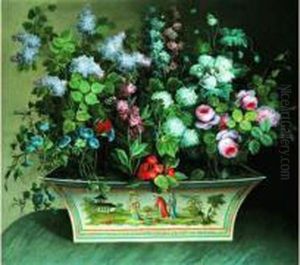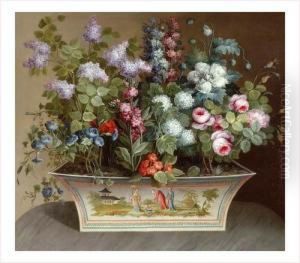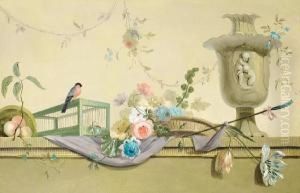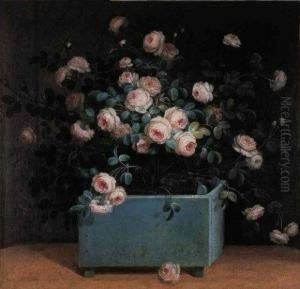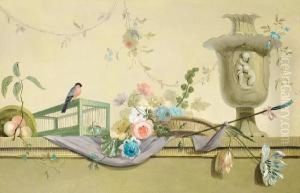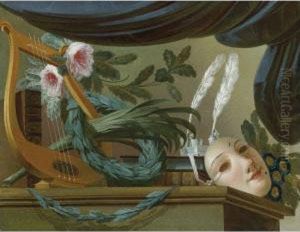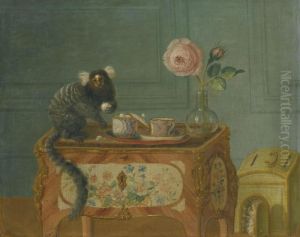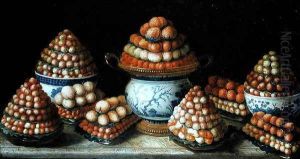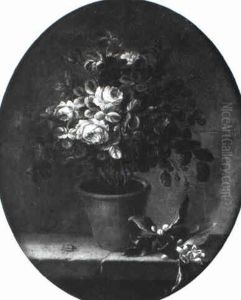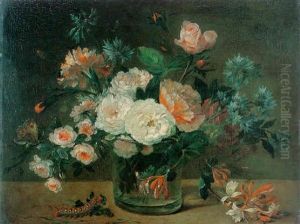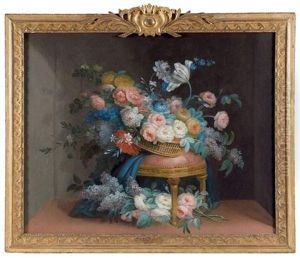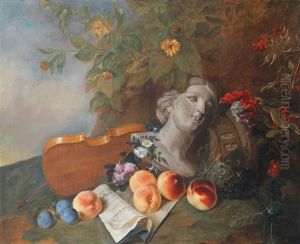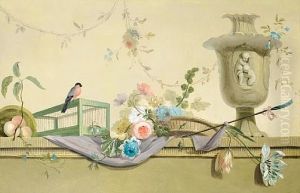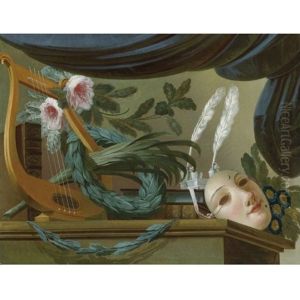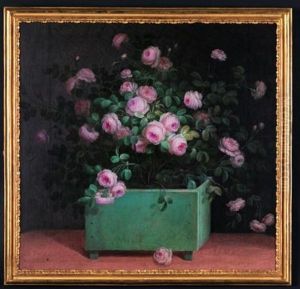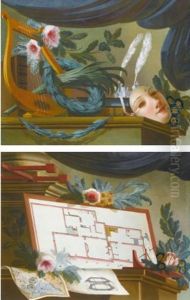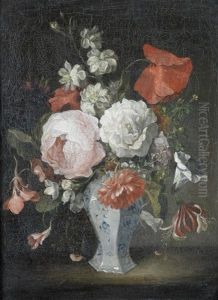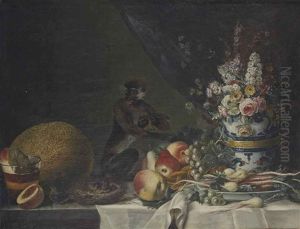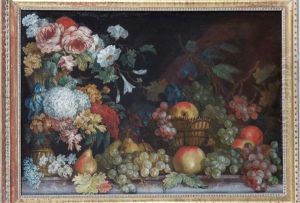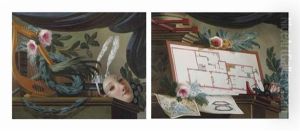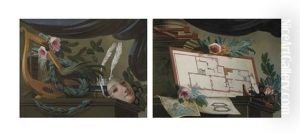Louis Tessier Paintings
Louis Tessier was a French painter, primarily known for his work in the Rococo style, which was prevalent during the early to mid-18th century. Born in 1719, Tessier worked during a period that was characterized by its elaborate ornamentation, intricate detail, and often playful or light-hearted themes. He was not as widely recognized as some of his contemporaries, such as François Boucher or Jean-Honoré Fragonard, but he nonetheless contributed to the art of his time with his particular talent for still lifes and genre scenes.
Tessier's early life and training are not thoroughly documented, but it is known that he was active in Paris and that he exhibited his work at the prestigious Académie Royale de Peinture et de Sculpture. He became a member of the Academy in 1755, which was a significant accomplishment for any artist of the time. Throughout his career, Tessier painted for a range of clients, including members of the aristocracy and the burgeoning bourgeoisie, who were eager to display their wealth and sophistication through the arts.
In his paintings, Tessier often focused on the domestic and the everyday, capturing moments of private life with a deft touch and attention to the interplay of light and shadow. His still lifes, which sometimes included elements of trompe-l'oeil, were particularly admired for their realism and the vibrancy of their subject matter. Tessier's work can be seen as a bridge between the Rococo and the emerging Neoclassical style, which began to gain prominence toward the end of his career.
Louis Tessier died in 1781, leaving behind a modest but respectable body of work. His paintings can be found in various art collections and museums, offering a glimpse into the visual culture and tastes of 18th-century France. Though he may not have achieved the renown of some of his contemporaries, Tessier's contributions to French art during the Rococo period ensure his place in the annals of art history.
